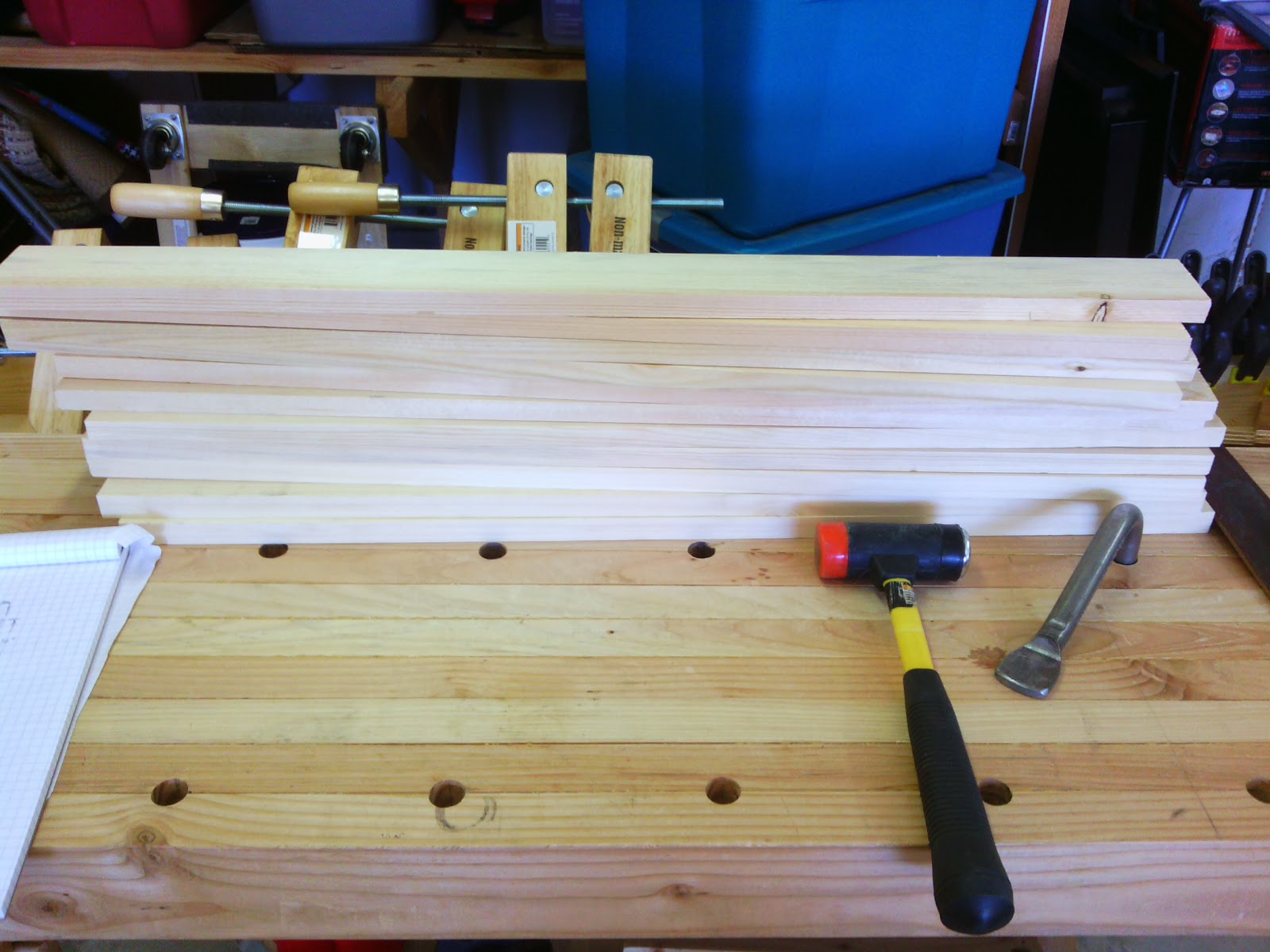So I've been thinking about this post for a couple weeks, and figured that since I hit a perfect example today, I'd go ahead and do an extra post.
I really admire those who get the opportunity to learn from or at least watch an experienced woodworker. As much as I know I am capable of learning on my own and with the help of books and the internet, I don't believe there is a substitute for hands-on instruction. I can learn to plane, saw, and drill with those instructions available to me, which means that I can also learn to dovetail, mortise and tenon, and other general joinery. It's just going to take a lot more time and practice since I can't see the fine details of how something is done or even have someone tear apart my work with well-meaning criticism. Instead, all I can do is try to tear apart my own results, appreciate the work and time that went into it, and vow to do better next time while noting what I think probably went wrong. Maybe I do better on the next one, or maybe I don't.
I believe the most difficult thing to learn for me is how to visualize a piece and know what type of joinery should be used. I can read and read and read until my eyes roll back into my head--and yes, a little bit does sink in--but until I do something with it or see it explained on the workpiece in front of me why I should or should not use a style of joinery, I'm just guessing. I'm not one who generally likes to copy work someone has already figured out. I've done it and will do it again, but it's just not my thing. I don't learn from it, other than sawing, drilling, chiseling, etc. At times I believe I'll just be learning by seeing what furniture blows up.
I do halfway understand wood movement, but I don't know how to control it or compensate for it. What joints are good to use in those types of situations? I do know the smaller the piece, the less it matters, but now I'm getting into real pieces of furniture. And that brings me to the current dilemma on the new side table, which I'll get to in just a minute, right after I catch everyone up.
I was also to get all the boards for the top cut today and decided to lay them all out to see how it would look. I also needed to figure out how I was going to do the joinery on the table itself, and make sure the ideas in my head were still going to look the same (or similar at least) in real life.
I was going to half lap the long edges of the top and then peg and glue each joint, like a breadboard end, but just lengthwise. As the top will be made of 14 pieces laid side to side (these are 14" long, which is the depth of the piece) I was going to laminate them all together and then rabbet the long edges (across the grain) for the "breadboard" edge. I'd leave space in there for the wood to move in the length.
The other half did not quite agree, and she likes it better with the exposed end grain, which I'm okay with. This just means I'll create a frame underneath and attach each piece to the frame. This will keep them all from warping or bowing. But how to attach them? If I use glue or pegs, won't that create too much stress in the top due to seasonal movement?
Again, this is where learning from an experienced woodworker would come in handy. I can make this table look pretty darn good, but I also want it to last. I'm not worried about the table getting beat up, but I'd rather it not become firewood as soon as the desert experiences some type of freak humidity or I move back to the Midwest and find myself furniture-less.
So that is where I'm at for the moment. I'll do some more reading and research, looking for examples and such, to see what the world has accomplished before me. I'm sure I'm not the only one!
Until tomorrow!
Josh






















